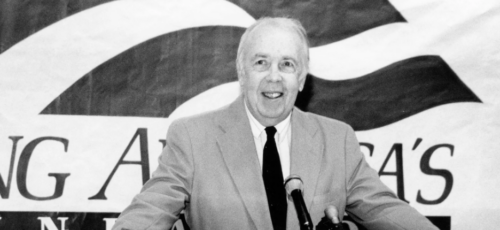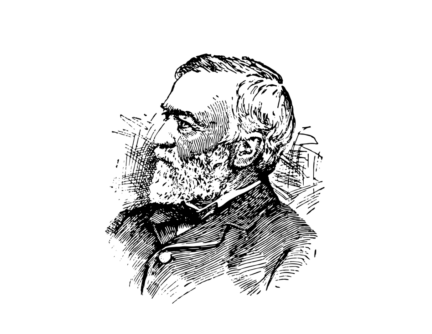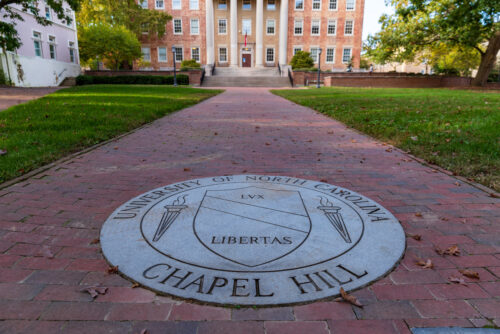Success Academy charter schools attempt to combine the best of traditional and progressive educational methods in order to provide inner-city New Yorkers the best education available.
For most of the 20th century, education was divided into two camps. The “progressives,” who were not always leftists, believed that children learned best when they were given opportunities in schools to express themselves. Progressive schools tended to be free-form places where order is loosened and students advance by showing their creativity.
Then there are traditional schools, where students sit and teachers lecture and obedience is key. Traditional schools are places where uniforms are worn, students are drilled repeatedly, and, ideally, students advance from one grade to the next with the precision of a metronome.
But what if you could combine traditionalism and progressivism and have a place where students are regimented but what they are taught is not necessarily traditional? That is the premise of Success Academy, a network of charter schools based in New York City which is analyzed by Rebecca Mead in the New Yorker and by Fordham Institute senior fellow Robert Pondiscio in his book How The Other Half Learns.
The Success Academy has gotten a great deal of philanthropic support. Their primary backer among foundations is Julian Robertson, whose Robertson Foundation has donated at least $45 million to the Success Academy since 2015. In 2017 Success Academy received the Broad Prize, a quarter-million-dollar gift given to the best charter schools in the U.S.
As both Mead and Pondiscio note, the goal of Success Academy is to combine the best of progressive and traditional education into a new synthesis. As Mead notes, the goal of Success Academy’s founder, Eva Moskowitz, is “to combine aspects of a very traditional approach—rigid discipline, tracking, countdowns, rigorous accountability—with elements of a highly progressive curriculum.”
So if you visit a Success Academy elementary school, you’ll find all students wearing uniforms (and identical uniforms—wearing different-colored socks gets you suspended) sitting at desks with hands on the desks when the teacher is talking and with classes divided into periods. The planning is so centralized that the ideal among Success Academy is that students learn the same things at the same time across the system.
Success Academy is also the only charter school system I’ve heard of where parents are given report cards and assignments. They have to read to their children for some time every day, because there’s a lot of evidence that children from lower-income households don’t hear as many words when they’re toddlers as the ones from upper and middle-income households do—which ensures that they begin their education at a disadvantage that only grows worse over time. In addition, parents with children in the Success Academy make sure their children do their homework every day. These parental restrictions are a sharp contrast to most schools, where parents are, at best, a burden to be tolerated rather than partners in educating their children.
It’s a common critique of charter schools that they practice “creaming,” taking the best students and leaving the laggards for public schools. But Pondiscio notes that Success Academy is “cherry-picking parents. Parents who are not put off by uniforms, homework, reading logs, and constant demands on their time but view those things as evidence that here, at last, is a school that has its act together.”
Success Academy does not have school buses, so parents have to make sure their children are left at the school by 7:45 every morning and picked up at 3:45 every afternoon (except for Wednesdays, when classes end at 12:30 for teacher workshops). Those parents, many immigrants from Africa and the West Indies, buy into Success Academy’s culture, largely because they know that, unlike the public schools, Success Academies are safe places for children to learn.
There are reasons for Success Academy’s many rules. There’s a good deal of evidence that if children don’t learn to read by second grade, they fall farther and farther behind and become educational failures. Success Academy’s students do, for the most part, learn. They routinely pass any state and national exam, and the best schools in the Success Academy chain get scores that equal and occasionally surpass those in rich suburbs.
You could argue that testing plays too large a role in schools, but the tests are there, and, as far as I know, the scores given to Success Academy schools are honest ones. (The massive cheating scandal in Atlanta, which I wrote about here, shows what happen when teachers and administrators try to forge test scores.)
But not everything in the Success Academy day is about preparing for tests. They do have frequent field trips to New York City landmarks that inner-city residents never get to see. Some of the curriculum involves being involved in long-term projects similar to those featured in progressive schools.
Robert Pondiscio’s book has extensive reporting on Success Academy in the 2016-17 school year. His fair and thoughtful reporting shows his readers many details that a less thorough reporter might have skipped. My favorite is that New York City assigns paraprofessionals for classes where students have fallen behind, but these paraprofessionals are not part of the Success Academy curriculum and often get in the way of Success Academy teachers trying to do their jobs.
Pondiscio also makes clear that it’s far from clear that Success Academy graduates will go on to successful college careers. He notes that Success Academy’s first attempt at a high school was a spectacular failure, despite fancy décor (dark oak was a favorite) and teachers recruited from such top prep schools as Deerfield and Hotchkiss. The school’s first principal, Marc Meyer, who worked for MindUP: The Goldie Hawn Foundation, found that Success Academy graduates, given the freedom to slack off, would do so and would show up to class, if they bothered to attend, in sweatpants.
The Success Academy students, Meyer said, “did not do what I expected they were capable of doing. They didn’t know how to study independently without teachers hovering near them…as close as I am to you.” Moreover, the prep-school teachers had no idea how to deal with a student who wanted to skip classes and hang around the gym all day.
Success Academy reorganized its high school but it’s too early to tell how successful the reorganization will become. But Pondiscio and Mead both make clear that Success Academy is very good at making inner-city students excel and do as well in school as their suburban counterparts. But it remains to be seen whether these academies can prepare their students to succeed in college—and in life.






